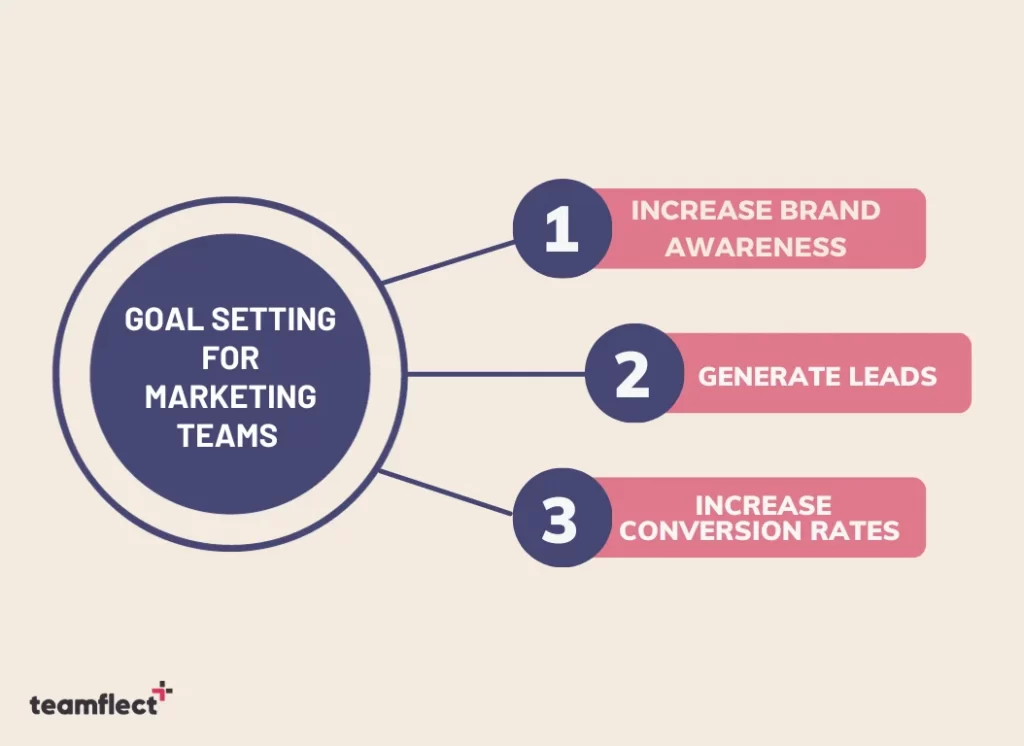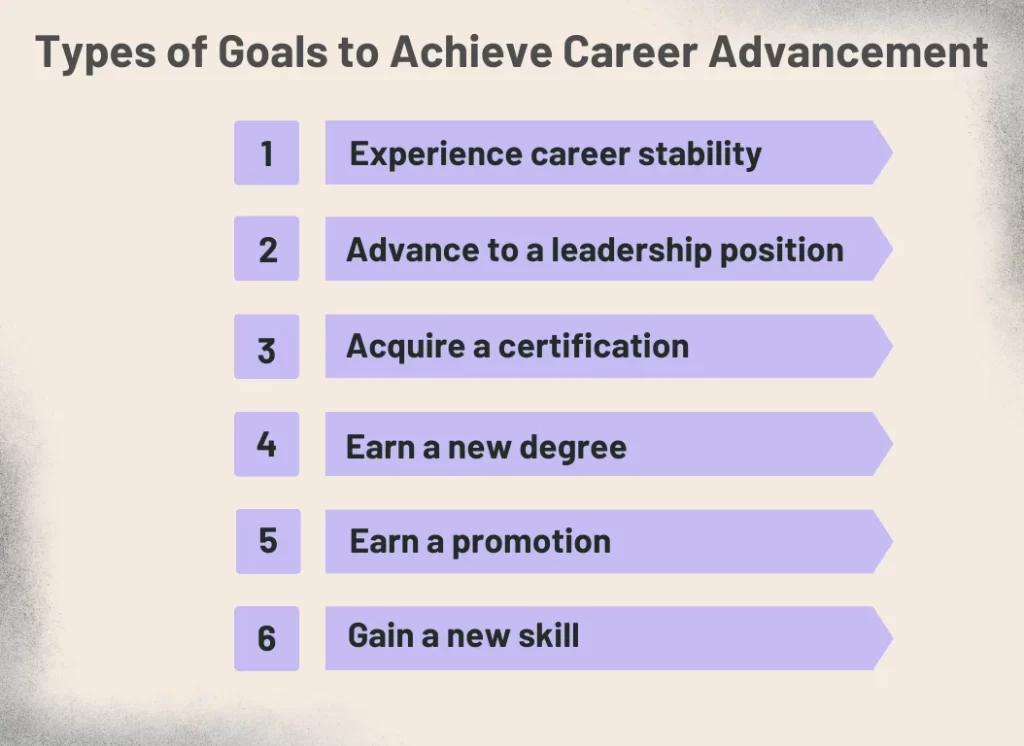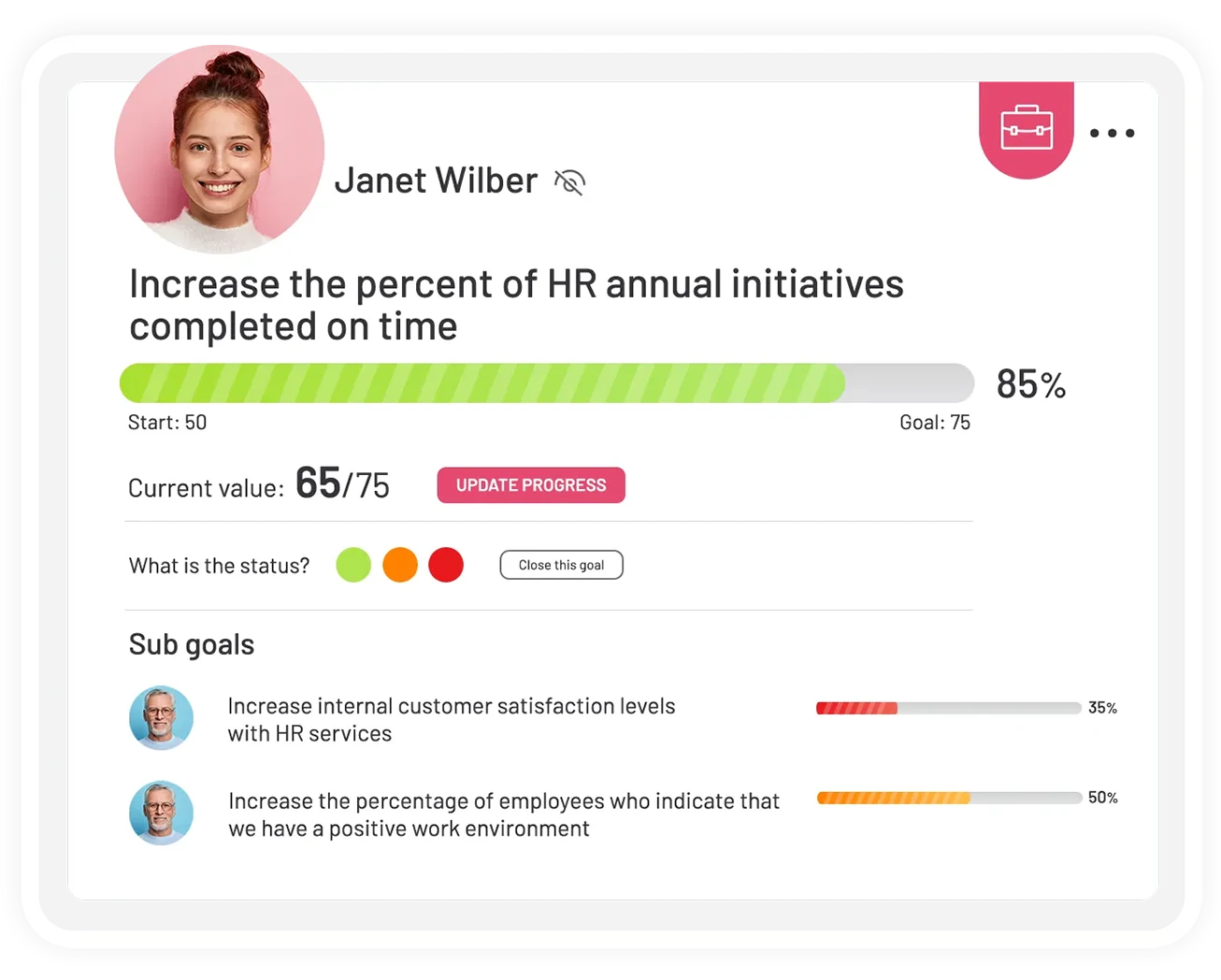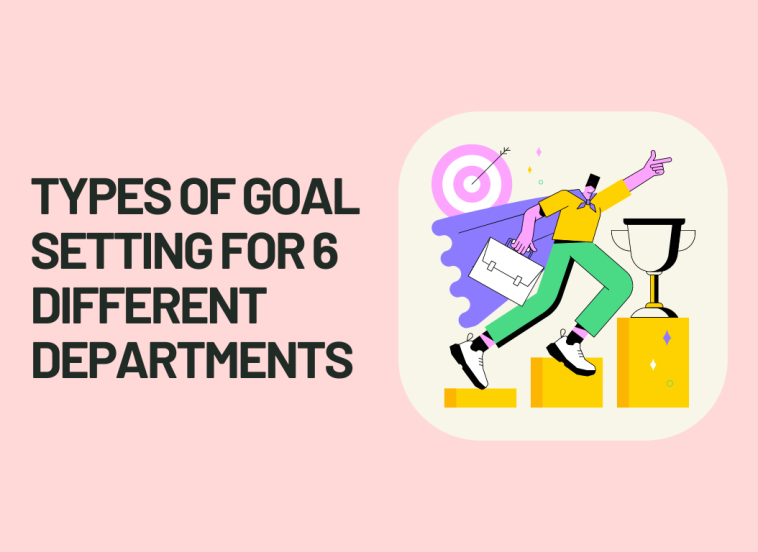Setting goals and striving for achievement is essential for us humans. We all have hopes and dreams, where we also see the importance of initiating the planning of such hopes and dreams in each layer of life.
In this article, we will go over the importance of goal setting, and then we will further discuss types of goal setting for different teams both in a corporate and in small-scale business environment. Let’s dive in!
Table of Contents
Finding The Best Types of Goal Setting: Definition
The goal-setting theory allows companies to set operational goals and achieve their desired outcome. Goal setting can be defined as the creation of a strategy to encourage and direct an individual or group toward a goal.
Goals are better than just dreams, hopes, and desires because they allow you to utilize a mental toolbox to achieve desired success in short steps without losing motivation down the road.
There are different types of goal setting, and choosing one of the right types of goal setting is crucial for performance management.
Why is Goal Setting Important?
Goal setting in psychology is an essential tool for self-motivation and self-drive –both at personal and professional levels. Self-attainment of actionable motion in thought forms the meaning we give to our deed. The purpose we set for our goals factors into our wording in prospective hence forming our goals toward achieving something higher.
By setting goals, we create the roadmap of where we start, where we are heading, and what would be the right toolkit and skillset that would be leading to our goal in formation.
On a personal level, it is our observation that the rewarding system of our brains are actively responsive to our deeds that are supportive to our welfare and prosperity. A reflection of this preservation in our being on a personal level has a deep impact on our professional life as we maintain our inner balance of this feedback cycle and bring it to our workplaces.
On a professional level, combined with our individual experiences, we require a supportive goal-setting system that earns its credibility in achievement, is open for connection, and supports commitment in professionals.
Goal setting is crucially important in performance management since it is one of the most important tools to managing performance —on corporate level or individual level. We can approximately ideate whether the goals have been reached at the timescale it has been bound to or not by objectively setting goals.
Poorly set goals that are not clear results in confusion and frustration from all parties involved. Using goal setting software is beneficial to take a preventive measure, untangle the thread of this confusion and frustration, and to streamline the processes of performance management.
Goal management software helps you do this with several features like:
- Automated goal tracking systems to track your goals
- Dashboards and progress reports to help you analyze your progress accurately
- Checklists to break down your goals into simple to-dos
- Text and email notifications to stay on top of deadlines
How to Set Goals for Employees?
Every business owner wants their employees to work at their peak performance, and the best way to achieve this at its best is by assigning them goals and keeping track of their performance. Motivated and directed employees are the basis of a successful business. Let’s dive into the basics.
Employee goals are based on defining specific, quantifiable, and rule-oriented goals. The manager should consider the employee’s skill set, career goals, performance, personal growth targets, and future possibilities before assigning maximum results.
For example, an employee’s emotional intelligence should be regarded before assigning goals. A manager should monitor the progress of goal achievement and the employees who achieve goals by their peak performance should also be rewarded.
Your goals should have the following characteristics;
- Goals should align with company objectives.
- Employee input should be taken to set job-related goals.
- Goals should be based on realistic expectations.
- Goals should be a little challenging.
- Goals shouldn’t be too easy or too hard.
- Goals should have a little flexibility.
- Goals should be aligned to your company’s success principles.
6 Types of Goal Setting for Different Departments
1. Types of Goal Setting for Development Teams
The development team of every organization is responsible for creating content and software for their website or company. Development team is the backbone of most companies, so setting goals for development teams is challenging work.
Setting goals for the development team allow them to stay ahead of the competition and give your developers space for them to professionally grow. You can adjust their goals based on their skills and the level of progress they show.
Developers also perform better with a time frame in their mind since plans allow developers to manage their work and complete it within the provided time limit. The most crucial benefit of goal setting is the confidence boost for your developers.
You can use one of the several management tools based on your business type. For example, if you own a large organization, premium performance management software will aid you while determining your objectives and key results.
However, small businesses or startups can use Microsoft Teams or another free software for creating significant goal-setting templates. Management tools are handy and allow goal achievement to be more organized and seamless and help you decide on the types of goal setting.
Here are ten ideas for goal setting for developer teams:
- Coding goals
- Career goals
- Code quality goals
- Code ownership goals
- System design goals
- Testing goals
- Debugging goals
- Teamwork goals
- Networking goals
- Professional goals
2. Types of Goal Setting for HR Teams
Human Resource professionals aim to seek one thing, which is “balance.” As an HR department professional, you are obliged to create a healthy and optimal employee environment. Using the best types of goal setting is especially important for HR professionals.
The HR department has the following functions;
- Hiring new staff
- Managing employee performance
- Training
- Employee experience
- Employee engagement
- Succession planning
- Development
- Improving culture
- Compensation
Here are some of the essential goals for HR teams:
Acquiring talent
HR professionals should stay updated with market trends and market standards to be able to identify skillful and talented individuals. It will be a loss for the company if a skilled person who shows promise is not hired. Thus, HR teams should understand the value and quality of a person and their talent and how valuable they will be to the company. This is a continuous goal rather than a term goal.
Retaining talent
HR teams should do their best to retain talented individuals whether by providing a good salary package and bonuses or enabling them to get a promotion. But, again, this is a strategic goal to stay ahead of the competition, not a term goal.
Employee experience
HR teams should enhance the company’s environment and the quality of employee experience. HR should take the emotional intelligence of employees into the equation as well. It nurtures the relationship goals between the company and employees.
3. Types of Goal Setting for Marketing Teams
The marketing department of an organization aims to increase the organization’s popularity and brand awareness. The organization’s business goals should be parallel to the working of marketing teams. The marketing team should consider market trends and popular marketing techniques while setting goals.

Some goals of the marketing team could be:
Increase brand awareness
The marketing team is entitled to promote the brand name among customers. Therefore, marketing teams should treat it as a performance goal and carefully carry out this process the whole time.
Generate leads
Promoting the company products among a specific user base is essential. The marketing team can achieve this through advertisements and newsletters etc. Time limit should also be considered during this goal process.
Increase conversion rates
It is up to the marketing teams to convert all the traffic on social media to sales. Giving more ads, adding CTAs (call to actions) to posts and creating different content could be subgoals to this main goal.
4. Types of Goal Setting for Sales Teams
Here are some essential goals for sales teams:
Increasing revenue
The sales department should set its goals primarily based on its annual revenue, which is a lifetime goal for the sales team.
Decreasing bounce rates and customer loss
The sales department should also set its goal to reduce bounce rates and loss of customers over time.
Increasing customer loyalty
Customer loyalty matters a lot to the success of a company. That is why sales teams set their goals to increase customer retention.
5. Types of Goal Setting for Customer Service
The front line and the first contact of any company is the care team a phone away from the customer and external stakeholders who look for initial contact at an enterprise.
First contact resolution is priority number one at the front desk, there are four other customer service goals and objectives that also have a major impact on a company’s forthcoming brand ability.
For front-end customer care service teams, we see the initial goals – not limited to, as listed below:
- Reducing customer churn rate
- Improving an industry-specific customer service metric
- Increasing employee satisfaction rates
- Meeting your daily service metrics
- Acquiring a skill or learning a piece of software
- Responding to all pieces of customer feedback, regardless of if they are positive or negative
Although with CRM tools for managers it is easy to have customer metrics, with performance management tools, the Customer Service Managers get to have an in-depth look into their teams and have thorough reporting on their customer care services on the operational level.
6. Types of Goal Setting for Finance Teams
A finance team produces financial reports, direct investment activities, and develops strategies to ensure the long-term financial health of the organization. Because they have the strongest grasp of an enterprise’s finances of anyone in the organization, they also help executives make decisions that involve the company’s future.
Here are a few samples of the essential goals of a finance team:
- Increase revenue
Your specific objective may emphasize growth in a particular vertical, product, industry, or geography. - Revenue in target markets
Identify new target markets—where are the opportunities? If completed successfully, this project would help accomplish the overall goal of increasing revenue. - Decrease costs
Objectives focused on cost may emphasize product expenses, overhead expenses, the cost of a particular business channel, etc. - Operating costs
Increase profits. For-profit companies may set a target profit, or work to increase their profit margin. - Net profit
Improve your market perception. What customers think about your brand has a major impact on your success. You might try to improve their perception at some particular stage of the consumer journey (the familiarity stage or the purchase stage, for example). - Percentage of market share index
Implement a push for more customer reviews in hopes of increasing brand recognition. - Improve customer experience
Good relations with customers, citizens, or service recipients are integral to running an organization successfully. For this objective, you will want to home in on a particular aspect of the customer experience you hope to improve, such as problem resolution or customer service.
Types of Goals to Achieve Career Advancement

1. Experience career stability
You can’t be complacent in today’s highly competitive job market. To secure your career stability, you need to continuously improve your skills and broaden your network.
Among other types of goals this is the foundation of your career journey. To have career stability, you can focus on gaining more experience, perfecting your time management skills, and creating your personal brand.
2. Advance to a leadership position
Reaching a leadership position is a common goal while climbing the career ladder. While turning this dream into reality, you will need to improve your leadership skills.
You can pursue leadership training and seek mentorship from experienced professionals in your organization. With the help of a mentor, you can equip yourself with the skills needed to take on leadership roles.
3. Earn a certification
By collecting certifications, you can showcase your expertise and competence within your field. These certifications will open doors to new opportunities and they can even lead to a salary increase.
Where can you get these certifications? You can use online learning platforms like Coursera and Edx which offer a wide range of courses and certificates from globally recognized institutions.
4. Earn a new degree
To go beyond getting certifications, you can pursue a new degree. Whether it’s an undergraduate or graduate program, pursueing a new degree can be a strategic move to improve your skills.
However, before making this big commitment, it’s important to make sure that the degree program aligns with your career goals.
5. Earn a promotion
Among the types of goals, this goal is more focused on short-term gains rather than broader objectives. This goal will propel you into leadership or project management roles.
However, you need to perceive a promotion as a stepping stone rather than the end of your career journey to continuously improve yourself and avoid becoming complacent.
6. Gain a new skill
Although acquiring new skills can seem repetitive, it’s not just about hard skills. Soft skills, like communication, teamwork, problem-solving, and time management, are equally important for employers.
You shouldn’t underestimate the importance of both hard and soft skills because they can be useful in your career advancement.
Closing Words
Setting smart goals is incredibly crucial to the success of an organization. For this reason, each team should set their goals after assessing their position in the market and work toward achieving their goals. Using goal setting software could be beneficial for tracking and setting goals without a hassle.



